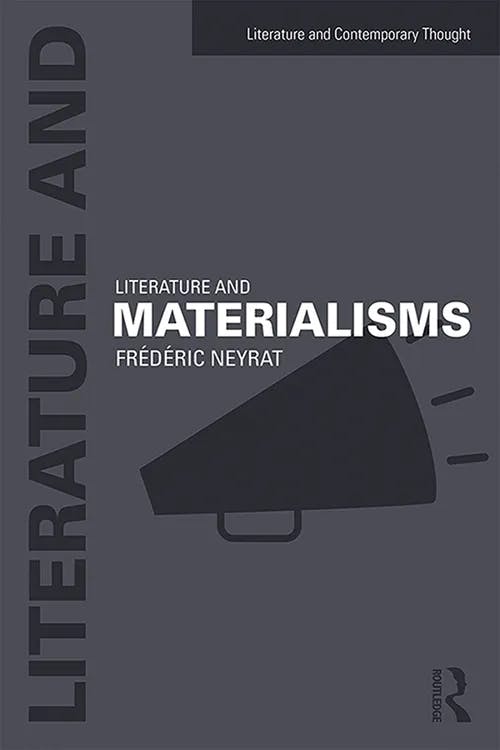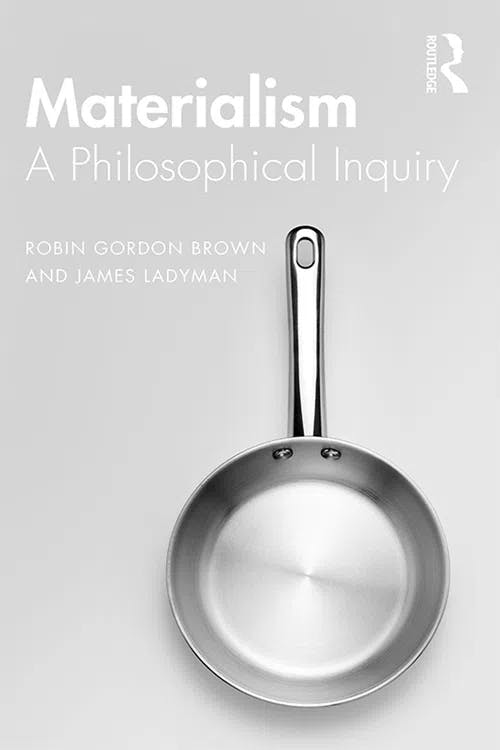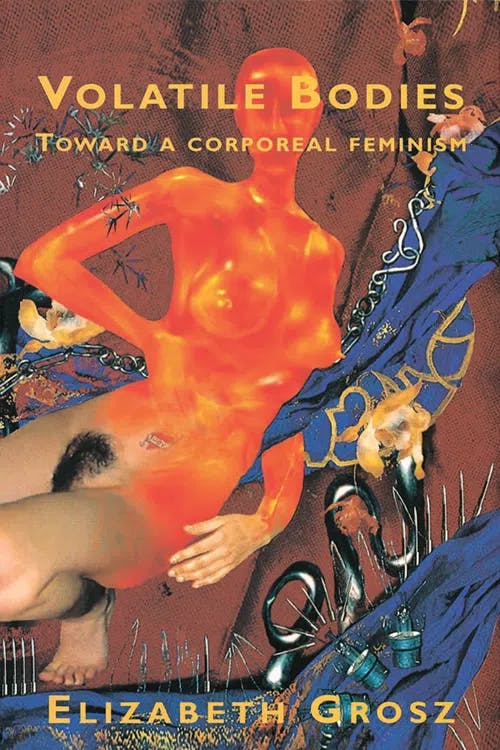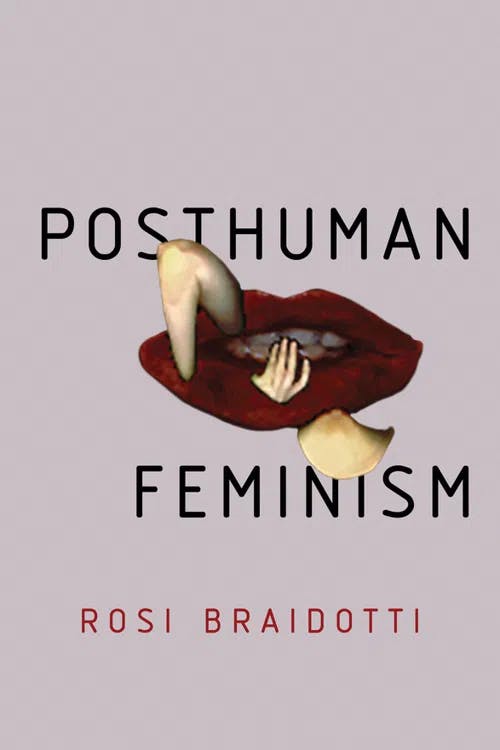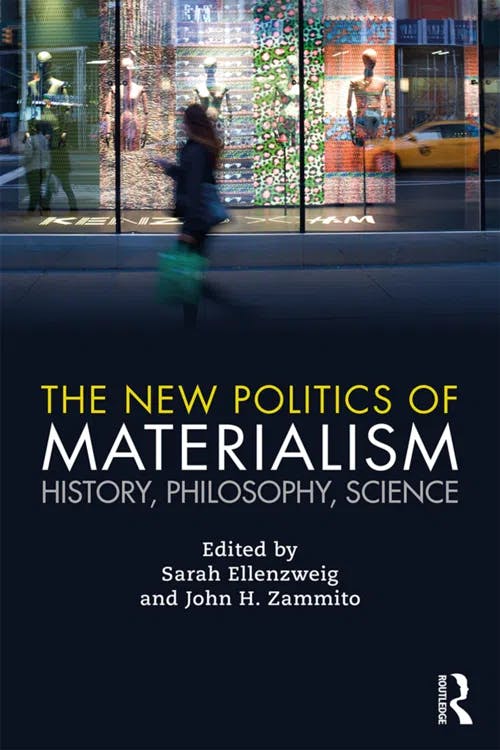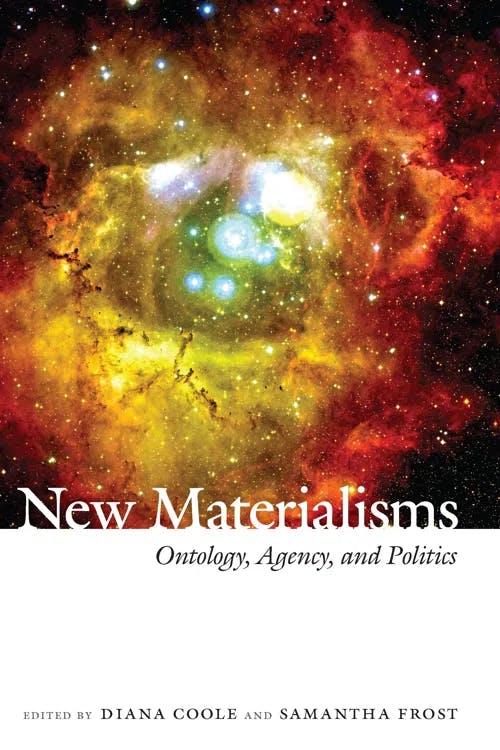What is Materialism?
MSt, Women's, Gender & Sexuality Studies (University of Oxford)
Date Published: 04.05.2023,
Last Updated: 24.11.2023
Share this article
Defining materialism
When you hear “materialism,” you might picture Madonna as a diamond-studded material girl singing about her preference for boys with “cold hard cash.” In philosophy, materialism doesn’t mean being materialistic (prioritizing tangible wealth). However, materialists would agree with Madonna that “we are living in a material world.”
Philosophical materialism is an ontology, a way of understanding the nature of being. In simplest terms, materialism proposes that all facts of existence are reducible to or at least dependent upon physical matter and processes. Everything is determined by matter — not just bodies, animals, and objects, but also the human mind and the course of history.
At its core, materialism is a descriptive philosophy; it tells us what things are, not how to live. Historically, some materialists have engaged in hedonism, making the most of physical pleasures in what they believe is our one life, while others have adopted ascetic lifestyles. Frédéric Neyrat argues that materialism is essentially in opposition to ideologies or systems of belief. Neyrat writes,
each time materialists turn their idea into dogmas, into an ideology, they betray their intellectual project. That is why [...] true materialism is necessarily incomplete. [...] Materialism is a battlefield: Not a doctrine first, but a machine aiming to get rid of doctrines. (Literature and Materialisms, 2020)
Frédéric Neyrat
each time materialists turn their idea into dogmas, into an ideology, they betray their intellectual project. That is why [...] true materialism is necessarily incomplete. [...] Materialism is a battlefield: Not a doctrine first, but a machine aiming to get rid of doctrines. (Literature and Materialisms, 2020)
While materialism may not seem inherently invested in ethical questions — compared to, for example, existentialism — it is a philosophy that has become entangled in moral and political conflicts. Before the twentieth century, materialism was viewed as dangerous by religious powers because it denied an immaterial god; while materialism seems to necessarily be an atheistic philosophy, given its disavowal of the immaterial, many materialists have at least publicly claimed religious belief (Materialism, Brown and Ladyman, 2019). Materialism also breaks the mind–body distinction, especially popular in Western philosophy, and threatens human exceptionalism. In the twentieth century, materialism’s associations with socialism and communism did not add to the philosophy’s appeal, and critical theory’s turn toward constructionism placed less importance on the physical world. In recent decades, however, there has been a revival of interest in the material world, with many leading intellectuals identifying as materialists. Materialism is a useful tool for philosophers grappling with increasing technologization and our fraught relationship with the planet.
If all materialists share one belief, it is that things matter. While this idea may seem simplistic, it has radical implications, especially in a Western culture which has repeatedly divorced mind from matter. Materialism’s defense of matter is part of why it is useful to theorists with liberatory political goals. As Neyrat writes,
Hatred of matter is a sad passion because it is an affect that leads us to despise the Earth (too dirty), the body (too mortal), animals (too stupid), or objects (less interesting than us, the beautiful and so, so smart human subjects). If materialism is a battle, it is a battle for life, for the environment, for what is despised, discarded, subjugated — like the workers for political thinker Karl Marx, like the colonized for anti-colonial thinker Franz Fanon, like women for feminist thinker Hélène Cixous. (2020)
In this guide, we’ll offer an overview of materialism from ancient times, examining the materialism of Karl Marx and Friedrich Engels before addressing major developments in materialism in the twentieth and twenty-first centuries, like physicalism and new materialism.
A brief history of materialism from ancient times
Materialism in various forms has existed since ancient times. In Materialism (2019), Robin Gordon Brown and James Ladyman trace materialism to the Indian tradition of Lokayata, or Carvaka, and ancient Greek atomists. The Lokayata tradition believed that reality is built upon four elements — air, earth, fire, water — from which everything, even consciousness, is ultimately derived. For those following Lokayata beliefs, knowledge was derived from sensory perception; without a higher power or human soul, the goal in life should be the fulfillment of desires.
Democritus, considered the first Greek atomist, believed that everything was material and could be broken down into tiny, indivisible particles called atoms (from “atomos” meaning indivisible). The only reality besides atoms is infinite void, vacuum. Too small to be observed with the human eye, Democritus’ atoms come in an infinite variety of shapes, sizes, and types; even human souls are built from a specific kind of atom. Collisions between atoms produce the world as we perceive it.
Epicurus built on Democritus’ philosophy by envisioning the gods as built of special atoms, part of his effort to combat the fear of death that he believed was produced by religious beliefs. Epicurus’ significant contribution to atomism was the idea of the “swerve”: all atoms move downward at a constant speed, but they occasionally swerve and collide with each other. This idea is an attempt to build human freedom into a materialist framework. David J. Furley examines these ideas of “indivisible magnitudes” and “voluntary action” in Two Studies in the Greek Atomists (1967, [2015]). The later Roman poet Lucretius (c. 99–55 BCE) articulated a version of Epicurean philosophy, perhaps combined with his own theories, in the didactic poem De Rerum Natura, or On the Nature of Things (2012). The wide-ranging poem discusses atomic theory, death, dreams, sex, disease, and natural phenomena. (For more on these philosophers, see A History of Western Philosophy.)
For about a thousand years, materialism fell out of philosophical memory. Then, in 1417, On the Nature of Things was rediscovered in a German monastery. Lucretius’ poem went on to influence figures from Niccolo Machiavelli to Michel de Montaigne, from Edmund Spenser and John Donne to Francis Bacon.
The seventeenth century saw the rise of mechanical philosophy, an alternative to Aristotelian theories of the four elements, Ptolemaic geocentrism, and supernatural alchemy. Mechanism saw nature as a clockwork machine with hidden parts and inner workings yet to be fully discovered. Notable mechanists included Marin Mersenne, Pierre Gassendi, and Robert Boyle.
Other important philosophers of the seventeenth and eighteenth centuries influenced by materialism include Thomas Hobbes, who claimed to believe in a material god, and David Hume, whose worldview combined materialism and skepticism. Hume believed that, while knowledge could only be gained from sensory perceptions, the senses were also ultimately unreliable. He angered religious authorities for his arguments about the improbability of miracles because they break the laws of nature. (For more, you can see our guide on empiricism.)
By the start of the nineteenth century, several prominent scientists and philosophers had adopted at least elements of a materialist worldview. However, the influential theories of the seventeenth-century philosopher René Descartes also remained popular; he had proposed a dualistic worldview, separating a somewhat mechanistic physical world from the immaterial and transcendent. Cartesian binaries between mind and body, spirit and substance, seemed false to materialists.
The dialectical and historical materialism of Marx and Engels
The most significant developments in materialism in the nineteenth century — arguably, in the history of materialist thought — were proposed by Karl Marx and Friedrich Engels, namely dialectical and historical materialism. For them, the history of philosophy was a struggle between materialism (which sees the world as reducible to material processes) and idealism (which views reality as dependent upon ideas and mental functions).
Marx and Engels proposed their materialism as a revision to an influential strain of idealism, the philosophy of G. W. F. Hegel. Hegel is known for his proposal in The Phenomenology of Spirit (1807, [2019]) of a dialectical which shapes culture and history: thesis and antithesis are constantly at odds and responding to each other, but gradually moving toward synthesis, more sophisticated thought, and human progress.
German philosopher Ludwig Feuerbach provided the critique of Hegelian idealism that Marx and Engels would build upon. As Brown and Ladyman write in Materialism,
Feuerbach’s contribution to the materialist tradition may be considered in two aspects: first a critique of Hegelian idealism, and second a critique of Christianity. He turns Hegelianism on its head and argues that rather than thought, or spirit, being primary, it is matter that is primary, and from which thought emerges secondarily. Correspondingly, he sees the Christian conception of god as a projection of human faculties. (2019)
Robin Gordon Brown and James Ladyman
Feuerbach’s contribution to the materialist tradition may be considered in two aspects: first a critique of Hegelian idealism, and second a critique of Christianity. He turns Hegelianism on its head and argues that rather than thought, or spirit, being primary, it is matter that is primary, and from which thought emerges secondarily. Correspondingly, he sees the Christian conception of god as a projection of human faculties. (2019)
Marx and Engels apply the concept of constant conflict proposed by Hegel’s dialectic to the material world. According to dialectical materialism, the dialectical development of human knowledge is driven by material reality and by the social practices that arise as a result of those material conditions. For Marx and Engels, mental and spiritual processes could only exist as products or reflections of material conditions.
In The Communist Manifesto, Marx and Engels apply this dialectical materialism to the history of class conflict. Marx and Engels write,
The history of all hitherto existing society is the history of class struggles. [...] Our epoch, the epoch of the bourgeoisie, possesses, however, this distinct feature: it has simplified class antagonisms. Society as a whole is more and more splitting up into two great hostile camps, into two great classes directly facing each other — bourgeoisie and proletariat. (1948, [2017])
Karl Marx and Friedrich Engels
The history of all hitherto existing society is the history of class struggles. [...] Our epoch, the epoch of the bourgeoisie, possesses, however, this distinct feature: it has simplified class antagonisms. Society as a whole is more and more splitting up into two great hostile camps, into two great classes directly facing each other — bourgeoisie and proletariat. (1948, [2017])
Although class antagonism may seem abstract, Marx and Engels emphasize that this history of class struggle is driven by material needs. The relationships between humans and other materials, especially through economic systems, have far reaching social and political consequences. Traditional Marxism proposes that a society’s infrastructure (its economic base) determines its superstructure (not only its politics but also its culture, values, and art). According to Marxism, an artist does not work entirely autonomously when they produce a work; they are influenced by material factors — the current market for art, artistic trends (which are driven by that market), the price of their chosen materials, the time they can afford to spend away from waged labor in order to produce art. For Marxists, material realities shape everything.
The theory of historical materialism not only envisions this history of class conflict but also predicts that the struggle between the bourgeoisie and proletariat will inevitably lead to a proletarian uprising, bringing about a communist revolution and the end of capitalism.
Marx believed that philosophy should have a real world purpose and propel social change. Marx and Engels thus apply materialism to history and politics, theorizing social systems — and, by extension, oppression — as materially rooted. (See our study guide on Marxism for more on Marx’s theories.)
Materialism, oppression, and liberation
In the twentieth century, many thinkers reinterpreted Marxist and materialist theories in conversation with other analyses of oppression. (Our study guide on critical theory offers an overview of some major twentieth century responses and addendums to Marxist theory).
First published in 1983, Cedric J. Robinson’s Black Marxism (2020) is an essential exploration of how traditional Marxism alone is inadequate for understanding Black oppression and liberation. Black Marxism proposes an understanding of the Black radical tradition that combines materialist thinking with histories of Black resistance and thought. Adapting a Marxist framework, Robinson accounts for racism as a material force which “permeate[s] the social structures emergent from capitalism” (2020). By calling attention to the Black radical tradition and fusing it with Marxism, Robinson provides a thorough examination of the intersections and divergences between race and class consciousness, and the entanglement of racism and capitalism. For Robinson, Black struggle is as historical and revolutionary a force as class conflict.
In Antebellum Posthuman (2018), Cristin Ellis traces current debates regarding materialism to the era before the American Civil War, illuminating a materialist strain of the antislavery movement. Ellis’s work is an important addition to the history of materialist thought, and it addresses pressing questions about synthesizing materialism and social justice.
While Robinson and Ellis examine how materialism can distract from or illuminate Black experiences, feminism and materialism also have an entangled and complex history. As we explore in our study guide on Marxist feminism, it can be difficult to unite worldviews which ultimately attribute oppression to different causes — in these cases, capitalism or patriarchy. Historically, the Cartesian dualism which separates body and mind has presented women as too material, associating femininity with flesh and immanence while masculinity is associated with intellect and transcendence. Some strains of feminism seek to abandon traditional understandings of the body altogether, such as Judith Butler’s argument that sex itself is not biological but constructed in Bodies That Matter (1996, [2011]). This turn toward constructionism is sometimes construed — falsely or not — as overlooking bodily realities. Other feminists prioritize an analysis of the material realities of our bodies, our genders, and their treatment in the world.
Although the combination of feminism and materialism can devolve into debates over biological essentialism, feminism’s reconsideration of the body after the constructivist turn of late twentieth-century theory also produced promising examinations of materiality which combat gendered oppression. Elizabeth Grosz is one major feminist theorist who engages with materialism, identifying its possibilities and limits in her books Volatile Bodies (1994, [2020]) and The Incorporeal (2017). Grosz explains how material feminism can combat a history of oppressive philosophy:
Given the coupling of mind with maleness and the body with femaleness and given philosophy’s own self-understanding as a conceptual enterprise, it follows that women and femininity are problematized as knowing philosophical subjects and as knowable epistemic objects. (1994, [2020])
Elizabeth Grosz
Given the coupling of mind with maleness and the body with femaleness and given philosophy’s own self-understanding as a conceptual enterprise, it follows that women and femininity are problematized as knowing philosophical subjects and as knowable epistemic objects. (1994, [2020])
Materialism can help rectify that problem, drawing attention to bodily experiences and questioning the validity of the mind–body divide.
Rosi Braidotti redefines materialism for our modern world in tandem with gender and sexuality studies, cultural studies, and sociology in Metamorphoses (2013) and Posthuman Feminism (2021). She writes,
Feminism is a new materialism in that it mobilizes the knowledge about the embodied, embedded and sexed roots of subjectivity of women and LBGTQ+ people and enlists them as unexplored resources to support the project of alternative subject formations (Braidotti, 1991, 2013). It mobilizes the premises for bodily empiricism to produce more accurate analyses of the power these marginal subjects endure (potestas), but also the power that they wield (potentia). (2021)
Rosi Braidotti
Feminism is a new materialism in that it mobilizes the knowledge about the embodied, embedded and sexed roots of subjectivity of women and LBGTQ+ people and enlists them as unexplored resources to support the project of alternative subject formations (Braidotti, 1991, 2013). It mobilizes the premises for bodily empiricism to produce more accurate analyses of the power these marginal subjects endure (potestas), but also the power that they wield (potentia). (2021)
For more on feminism and materialisms of several kinds, see Material Feminisms (Alaimo and Herman, 2008), Feminism and Materialism (Kuhn and Wolpe, 1978, [2013]), Between Feminism and Materialism (Howie, 2010), and Mattering (Pitts-Taylor, 2016).
Physicalism
Physicalism is sometimes used interchangeably with materialism in contemporary philosophy. When the term was introduced in the 1930s by Otto Neurath and Rudolf Carnap, it was understood as a particular linguistic philosophy (that every statement is synonymous with some physical statement). However, this original meaning of physicalism quickly fell away. Physicalism now has a very similar definition to materialism. As Gregor M. Hörzer writes in Understanding Physicalism, “Physicalism is the claim that everything is physical, or maybe more accurately, that there is nothing over and above the physical” (2020).
Some philosophers maintain a difference between physicalism and materialism. Materialism’s emphasis on matter seems to fall short in the face of modern scientific knowledge. Modern physics accounts for much that is not material in a strict sense, including forces like gravity. Physicalism accounts for a host of physical processes and does not imply that everything is reducible to matter per se.
Yet, defining physicalism based on physics leads to another problem. As Hörzer summarizes,
Which physics is the relevant one: current or future physics? If it is current physics, then physicalism is very likely false, because current physics is probably incomplete and additional properties are going to be needed in the dependence base that would not count as physical on such a view. [...] If the relevant physics is future (or final, ideal) physics, then the thesis of physicalism lacks content because we do not know what future physics will be concerned with. (2020)
Gregor M. Hörzer
Which physics is the relevant one: current or future physics? If it is current physics, then physicalism is very likely false, because current physics is probably incomplete and additional properties are going to be needed in the dependence base that would not count as physical on such a view. [...] If the relevant physics is future (or final, ideal) physics, then the thesis of physicalism lacks content because we do not know what future physics will be concerned with. (2020)
Some philosophers argue that “physical” should be defined as simply “non-mental.” This definition touches on a key concern of physicalism and materialism in the twentieth and twenty-first centuries: the mind–body problem, or whether the mind can be reduced to physical/non-mental properties.
New materialism
New materialism responds both to materialism itself and to critical theory’s move away from materialism. In the twentieth century, critical theory turned away from the material to emphasize constructivism, viewing meaning as not inherent but constructed through systems like language which are mentally and culturally produced. While new materialists recognize the strong theories that came out of this moment in critical theory, they also believe we cannot forget the power of the physical world. New materialists aim to disrupt a strict separation of matter and meaning, along with other dualisms like body–mind and nature–culture.
As Sarah Ellenzweig and John H. Zammito write in the introduction to The New Politics of Materialism (2017),
For new materialism, theory’s long-standing constructivist enterprise failed to acknowledge the lively productivity of matter itself, and in this way unwittingly continued to privilege the human agent and its self-proclaimed unique characteristics, even if undermining its complacency and efficacy. The impulse behind the new materialism is decidedly posthumanist, deliberately decentering the human into the encompassing dynamics of the world — a critique, as it were, from the outside in.
Edited by Sarah Ellenzweig and John H. Zammito
For new materialism, theory’s long-standing constructivist enterprise failed to acknowledge the lively productivity of matter itself, and in this way unwittingly continued to privilege the human agent and its self-proclaimed unique characteristics, even if undermining its complacency and efficacy. The impulse behind the new materialism is decidedly posthumanist, deliberately decentering the human into the encompassing dynamics of the world — a critique, as it were, from the outside in.
Like posthumanism, new materialism questions human superiority and exceptionalism. New materialism also embraces the liveliness of matter, a quality materialists themselves have not always acknowledged. Related to ideas like vitalism, vibrant materialism, and enchanted materialism (a term coined by Jane Bennett), new materialism understands matter not as inert and predictable but as lively, indeterminant, and changing. In Vibrant Matter (2010), Bennett sees in all matter — human or inhuman, organic or inorganic — ”thing-power,” her term for the vitality, force, and agency contained in matter itself. New materialists view objects as emerging in changing relationships with one another, shaping each other in seen and unseen ways; the very idea of the “subject” is altered as agency is distributed throughout these entangled webs.
In New Materialisms (2010), Diana Coole and Samantha Frost write,
Conceiving matter as possessing its own modes of self-transformation, self-organization, and directedness, and thus no longer as simply passive or inert, disturbs the conventional sense that agents are exclusively humans who possess the cognitive abilities, intentionality, and freedom to make autonomous decisions and the corollary presumption that humans have the right or ability to master nature. [...] In this monolithic but multiply tiered ontology, there is no definitive break between sentient and nonsentient entities or between material and spiritual phenomena.
Edited by Diana Coole and Samantha Frost
Conceiving matter as possessing its own modes of self-transformation, self-organization, and directedness, and thus no longer as simply passive or inert, disturbs the conventional sense that agents are exclusively humans who possess the cognitive abilities, intentionality, and freedom to make autonomous decisions and the corollary presumption that humans have the right or ability to master nature. [...] In this monolithic but multiply tiered ontology, there is no definitive break between sentient and nonsentient entities or between material and spiritual phenomena.
Here, we return to the core vision of materialism: a world in which all is matter. But new materialism promises that this world is no less vibrant and varied than an explicitly spiritual one. As non-human objects continue to exert their agency upon our lives (from the Covid-19 virus to rising oceans) and enter into entangled relationships with us (from a prosthetic limb to the device you’re using to read this article), materialism in its various forms will continue to prove a useful tool for examining the world we live in and our place, embedded within it rather than floating above it.
Further reading on Perlego
Contemporary Materialism: A Reader, edited by Paul K. Moser and J. D. Trout
Historical Materialism by Nikolai Bukharin
Stuff Theory: Everyday Objects, Radical Materialism by Maurizia Boscagli
Historical Materialism and Social Evolution, edited by Paul Blackledge and Graeme Kirkpatrick
The New Materialism: Althusser, Badiou, and Žižeck by Geoff Pfeifer
What is materialism in simple terms?
Who are major materialist thinkers?
What is physicalism?
What is new materialism?
Bibliography
Alaimo, S. and Hekman, S. (eds.) (2008) Material Feminisms. Indiana University Press. Available at: https://www.perlego.com/book/568747/material-feminisms-pdf
Bennett, J. (2010) Vibrant Matter: A Political Ecology of Things. Duke University Press. Available at: https://www.perlego.com/book/1466281/vibrant-matter-a-political-ecology-of-things-pdf
Braidotti, R. (2013) Metamorphoses: Toward a Materialist Theory of Becoming. Polity Press. Available at: https://www.perlego.com/book/1535436/metamorphoses-towards-a-materialist-theory-of-becoming-pdf
Braidotti, R. (2021) Posthuman Feminism. Polity Press. Available at: https://www.perlego.com/book/3118775/posthuman-feminism-pdf
Brown, R. G. and Ladyman, J. (2019) Materialism: A Historical and Philosophical Inquiry. Routledge. Available at: https://www.perlego.com/book/1599515/materialism-a-historical-and-philosophical-inquiry-pdf
Butler, J. (1993, [2011]) Bodies That Matter: On the Discursive Limits of “Sex.” Routledge. Available at: https://www.perlego.com/book/1607604/bodies-that-matter-on-the-discursive-limits-of-sex-pdf
Coole, D. and Frost, S. (eds.) (2010) New Materialisms: Ontology, Agency, and Politics. Duke University Press. Available at: https://www.perlego.com/book/1466463/new-materialisms-ontology-agency-and-politics-pdf
Ellenzweig, S. and Zammito, J. (eds.) (2017) The New Politics of Materialism: History, Philosophy, Science. Routledge. Available at: https://www.perlego.com/book/1496561/the-new-politics-of-materialism-history-philosophy-science-pdf
Ellis, C. (2018) Antebellum Posthuman: Race and Materiality in the Mid-Nineteenth Century. Fordham University Press. Available at: https://www.perlego.com/book/535883/antebellum-posthuman-race-and-materiality-in-the-midnineteenth-century-pdf
Evans, S. (2018) A History of Western Philosophy. InterVarsity Press. Available at: https://www.perlego.com/book/2987178/a-history-of-western-philosophy-from-the-presocratics-to-postmodernism-pdf
Furley, D. (1967, [2015]) Two Studies in the Greek Atomists. Princeton University Press. Available at: https://www.perlego.com/book/739411/two-studies-in-the-greek-atomists-pdf
Grosz, E. (2017) The Incorporeal: Ontology, Ethics, and the Limits of Materialism. Columbia University Press. Available at: https://www.perlego.com/book/773764/the-incorporeal-ontology-ethics-and-the-limits-of-materialism-pdf
Grosz, E. (1994, [2020]) Volatile Bodies: Toward a Corporeal Feminism. Routledge. Available at: https://www.perlego.com/book/1645625/volatile-bodies-pdf
Hörzer, G. (2020) Understanding Physicalism. De Gruyter. Available at: https://www.perlego.com/book/2107244/understanding-physicalism-pdf
Howie, G. (2010) Between Feminism and Materialism: A Question of Method. Palgrave Macmillan. Available at: https://www.perlego.com/book/3479962/between-feminism-and-materialism-a-question-of-method-pdf
Hegel, G. (2019) The Phenomenology of Spirit. Translated by P. Fuss and J. Dubbins. University of Notre Dame Press. Available at: https://www.perlego.com/book/1110604/the-phenomenology-of-spirit-pdf
Kuhn, A. and Wolpe, A. (eds.) (1978, [2013]) Feminism and Materialism: Women and Modes of Production. Taylor and Francis. Available at: https://www.perlego.com/book/1675735/feminism-and-materialism-rle-feminist-theory-women-and-modes-of-production-pdf
Lucretius (2012) On the Nature of Things. Translated by W. Leonard. Dover Publications. Available at: https://www.perlego.com/book/111022/on-the-nature-of-things-pdf
Madonna (2017) Madonna – Material Girl (Official Video) [HD] 25 August. Available at: https://www.youtube.com/watch?v=6p-lDYPR2P8
Marx, K. and Engels, F. (2017) The Communist Manifesto. Translated by S. Moore in cooperation with F. Engels. Pluto Press. Available at: https://www.perlego.com/book/665627/the-communist-manifesto-pdf
Neyrat, F. (2020) Literature and Materialisms. Routledge. Available at: https://www.perlego.com/book/1567498/literature-and-materialisms-pdf
Pitts-Taylor, V. (ed.) (2016) Mattering: Feminism, Science, and Materialism. NYU Press. Available at: https://www.perlego.com/book/719667/mattering-feminism-science-and-materialism-pdf
Robinson, C. (2020) Black Marxism. 3rd edn. The University of North Carolina Press. Available at: https://www.perlego.com/book/1732533/black-marxism-revised-and-updated-third-edition-the-making-of-the-black-radical-tradition-pdf
MSt, Women's, Gender & Sexuality Studies (University of Oxford)
Paige Elizabeth Allen has a Master’s degree in Women’s, Gender, and Sexuality Studies from the University of Oxford and a Bachelor’s degree in English from Princeton University. Her research interests include monstrosity, the Gothic tradition, illness in literature and culture, and musical theatre. Her dissertation examined sentient haunted houses through the lenses of posthumanism and queer theory.

